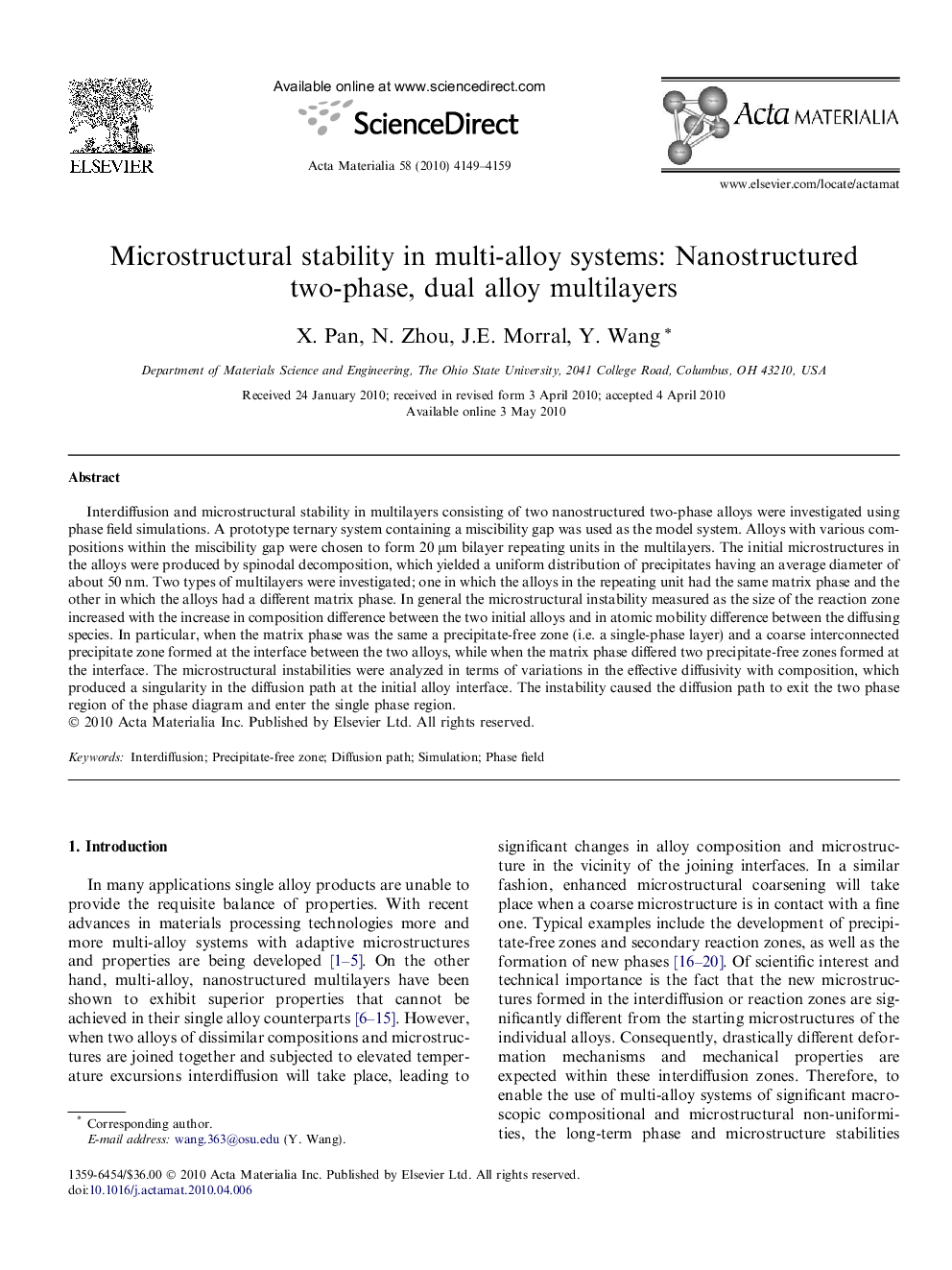| Article ID | Journal | Published Year | Pages | File Type |
|---|---|---|---|---|
| 1447500 | Acta Materialia | 2010 | 11 Pages |
Interdiffusion and microstructural stability in multilayers consisting of two nanostructured two-phase alloys were investigated using phase field simulations. A prototype ternary system containing a miscibility gap was used as the model system. Alloys with various compositions within the miscibility gap were chosen to form 20 μm bilayer repeating units in the multilayers. The initial microstructures in the alloys were produced by spinodal decomposition, which yielded a uniform distribution of precipitates having an average diameter of about 50 nm. Two types of multilayers were investigated; one in which the alloys in the repeating unit had the same matrix phase and the other in which the alloys had a different matrix phase. In general the microstructural instability measured as the size of the reaction zone increased with the increase in composition difference between the two initial alloys and in atomic mobility difference between the diffusing species. In particular, when the matrix phase was the same a precipitate-free zone (i.e. a single-phase layer) and a coarse interconnected precipitate zone formed at the interface between the two alloys, while when the matrix phase differed two precipitate-free zones formed at the interface. The microstructural instabilities were analyzed in terms of variations in the effective diffusivity with composition, which produced a singularity in the diffusion path at the initial alloy interface. The instability caused the diffusion path to exit the two phase region of the phase diagram and enter the single phase region.
